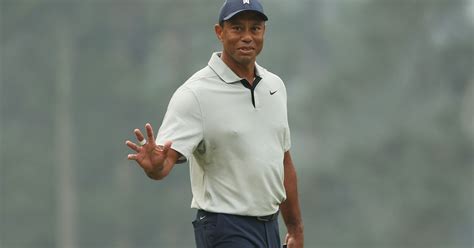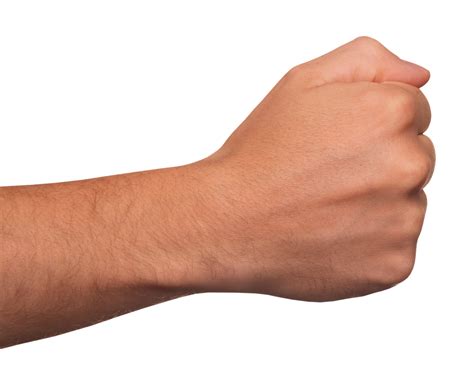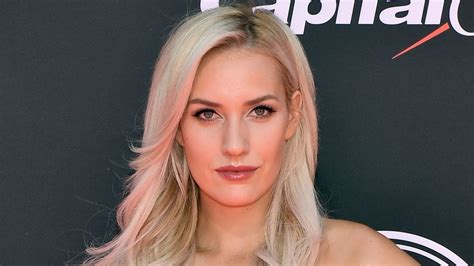
Caitlin Clark’s arrival in the WNBA has ignited unprecedented interest, blending awe-inspiring talent with controversy and sparking a nationwide phenomenon that is reshaping the league’s landscape.
Caitlin Clark’s transition to the WNBA with the Indiana Fever has been anything but ordinary, rapidly transforming the league and igniting both fervent admiration and intense scrutiny. Clark, the NCAA Division I all-time leading scorer, has brought unprecedented attention to women’s basketball, drawing record crowds, boosting television ratings, and fueling a broader conversation about the sport’s growth, competitiveness, and racial dynamics. While her on-court performance has been a work in progress, the “Caitlin Clark effect” is undeniable, marked by a significant increase in ticket sales, merchandise purchases, and media coverage that has reverberated throughout the WNBA.
The Indiana Fever, despite their struggles on the court, have become the epicenter of this burgeoning phenomenon. Games featuring Clark and the Fever are consistently sold out, drawing fans from across the country eager to witness the spectacle. The team’s television ratings have soared, reflecting a newfound interest in the WNBA that extends beyond traditional basketball audiences. However, this surge in popularity has also brought increased pressure and criticism, both for Clark and the league itself.
“People are going to talk, people are going to cheer, people are going to boo,” Clark stated in an interview following a recent game. “That’s just how it is.”
The impact of Clark’s arrival transcends mere statistics, embodying a cultural shift that raises complex questions about race, privilege, and the evolving dynamics of women’s sports. While Clark’s success has undeniably elevated the WNBA’s profile, it has also sparked debates about the recognition and compensation of Black players who have long been the backbone of the league.
The Clark Effect: Numbers and Narratives
The numbers speak volumes about the “Caitlin Clark effect.” Ticket sales for Indiana Fever games have skyrocketed, with some games selling out within minutes of going on sale. Television ratings for games featuring Clark have seen dramatic increases, drawing audiences that rival those of NBA games. Merchandise sales, particularly Clark’s jersey, have broken records, indicating her widespread appeal.
However, the narrative surrounding Clark’s arrival is more nuanced. While many celebrate her as a transformative figure for the WNBA, others question whether she is receiving disproportionate attention compared to other talented players, particularly Black players who have historically been underappreciated and underpaid.
As Yahoo Sports Columnist, John Schuhmann, put it, “Clark’s popularity has opened doors for many, it’s also placed a spotlight on existing inequalities.”
This sentiment is echoed by several WNBA veterans and analysts who point out that the league has long been dominated by Black players who have not received the same level of recognition or financial compensation as Clark. Some argue that Clark’s race and background have played a role in her rapid rise to stardom, while others maintain that her exceptional talent and marketability are the primary drivers of her success.
The On-Court Reality: Challenges and Adjustments
While the off-court impact of Clark’s arrival is undeniable, her on-court performance has been a work in progress. Clark has faced challenges adjusting to the physicality and speed of the WNBA, as well as the defensive strategies employed by opposing teams.
She has shown flashes of brilliance, displaying her exceptional shooting range, court vision, and passing ability. However, she has also struggled with turnovers and defensive assignments, areas where she needs to improve to become a more complete player.
“It’s a process,” Clark acknowledged. “I’m learning every day, and I’m working hard to get better.”
The Indiana Fever, as a team, have also faced challenges integrating Clark into their system. The team has struggled to find consistency and chemistry, leading to a series of losses. However, Coach Christie Sides and the Fever organization have expressed confidence in Clark’s potential and are committed to providing her with the support and resources she needs to succeed.
Navigating Race, Privilege, and Recognition
The conversation surrounding Caitlin Clark’s impact on the WNBA has also touched upon sensitive issues of race, privilege, and recognition. Some observers have pointed out that Clark’s race and background may have contributed to the disproportionate attention she has received compared to other talented players, particularly Black players who have long been the backbone of the league.
These discussions highlight the complex dynamics at play in women’s basketball, where issues of race, gender, and inequality intersect. While Clark’s success has undeniably elevated the WNBA’s profile, it has also sparked important conversations about the need for greater equity and inclusion within the sport.
“It’s not about tearing anyone down,” said veteran WNBA player Nneka Ogwumike. “It’s about recognizing the contributions of everyone who has helped build this league.”
The Future of the WNBA: A League Transformed?
The long-term impact of Caitlin Clark’s arrival on the WNBA remains to be seen. However, it is clear that she has already transformed the league in significant ways, bringing unprecedented attention, revenue, and visibility to women’s basketball.
Whether this surge in popularity will translate into sustainable growth and greater equity for all players remains to be seen. However, the conversations sparked by Clark’s arrival have the potential to reshape the WNBA for years to come.
“This is a pivotal moment for the league,” said WNBA Commissioner Cathy Engelbert. “We have an opportunity to build on this momentum and create a brighter future for women’s basketball.”
The “Caitlin Clark effect” is not simply about one player; it is about the broader potential of women’s sports to captivate audiences, generate revenue, and inspire future generations. As the WNBA continues to evolve, it will be crucial to address issues of race, privilege, and inequality to ensure that all players have the opportunity to thrive and contribute to the league’s success.
The Indiana Fever’s attendance has surged dramatically since drafting Clark, with home games consistently selling out. TV ratings have also seen a significant spike, drawing viewers who are new to the WNBA. This heightened visibility has led to increased revenue for the league and its teams, providing opportunities for investment in infrastructure, marketing, and player development.
However, the influx of attention has also brought heightened scrutiny, particularly regarding the treatment of Clark by opposing players. Some have accused veterans of targeting Clark with overly physical play, leading to debates about whether she is being fairly officiated and protected. This scrutiny has extended to social media, where fans and analysts have weighed in on every aspect of Clark’s performance and the league’s response.
“I think there’s a lot of people that are excited to see her,” Fever coach Christie Sides said. “But I also think there’s a lot of people that want to see her fail.”
Clark’s presence has also reignited conversations about the racial dynamics within the WNBA. The league has long been dominated by Black players, many of whom have not received the same level of recognition or financial compensation as Clark. This disparity has led to discussions about the role of race and privilege in shaping the narratives surrounding women’s basketball.
“We’ve been here,” Las Vegas Aces star A’ja Wilson said in an interview. “But now that Caitlin’s here, you see it.”
While Clark’s arrival has undoubtedly brought positive changes to the WNBA, it has also highlighted existing inequalities and challenges. The league must navigate these issues carefully to ensure that all players have the opportunity to thrive and that the sport continues to grow in a sustainable and equitable manner.
The intensity surrounding Clark’s every move, both on and off the court, underscores the profound impact she’s having on the WNBA. This attention also extends to her teammates, opponents, and the league as a whole, creating a ripple effect that is reshaping the landscape of women’s basketball. As the season progresses, it remains to be seen how Clark and the WNBA will navigate this new era of heightened visibility and scrutiny.
The story of Caitlin Clark’s early WNBA career is one of immense promise, undeniable challenges, and complex social dynamics. Her journey is a microcosm of the broader evolution of women’s sports, reflecting both the progress that has been made and the work that remains to be done.
Expanded Analysis
The Caitlin Clark phenomenon extends beyond the basketball court, encompassing elements of celebrity culture, social media buzz, and broader societal conversations. Her transition to the WNBA has not only amplified the league’s visibility but has also brought to the forefront discussions about gender equity, racial representation, and the distribution of opportunities in professional sports.
The increased attention on the WNBA, driven largely by Clark’s presence, has led to a surge in media coverage, with major sports networks dedicating more airtime to women’s basketball than ever before. This increased exposure has the potential to attract new fans, sponsors, and investors, further fueling the league’s growth.
However, the focus on Clark has also raised concerns about the potential for overshadowing other talented players in the WNBA. Many veteran players have expressed the need for a more balanced narrative that acknowledges the contributions of those who have paved the way for Clark and other newcomers. This includes players like Diana Taurasi, Sue Bird, and Lisa Leslie, who have dedicated their careers to building the WNBA and elevating women’s basketball.
The economic impact of the Caitlin Clark effect is also significant. In addition to increased ticket sales and merchandise revenue, the WNBA is experiencing a boost in sponsorships and endorsements. Brands are eager to associate themselves with Clark and the league, recognizing the growing popularity and marketability of women’s basketball. This influx of capital can be used to improve player salaries, upgrade facilities, and expand marketing efforts, ultimately benefiting the entire league.
Addressing the Challenges
Despite the positive aspects of the Caitlin Clark phenomenon, it is essential to acknowledge the challenges that come with increased attention and scrutiny. Clark has faced intense pressure to perform at a high level, both on and off the court. She has also been subjected to criticism and negativity, particularly on social media, where her every move is dissected and analyzed.
The WNBA must provide Clark with the support and resources she needs to navigate these challenges. This includes protecting her from overly physical play, ensuring fair officiating, and providing her with media training and guidance. The league must also work to create a more inclusive and welcoming environment for all players, regardless of their race, background, or playing style.
Looking Ahead
The Caitlin Clark story is still unfolding, and it remains to be seen how her career in the WNBA will ultimately play out. However, her impact on the league is undeniable. She has brought new fans, new revenue, and new attention to women’s basketball, and she has sparked important conversations about the future of the sport.
As the WNBA continues to grow and evolve, it must strive to create a sustainable and equitable ecosystem that benefits all players. This includes addressing issues of racial inequality, gender bias, and economic disparity. By embracing diversity and promoting inclusivity, the WNBA can solidify its position as a leading professional sports league and inspire future generations of female athletes.
The journey of Caitlin Clark in the WNBA is more than just a sports story; it’s a reflection of societal attitudes, evolving cultural norms, and the ongoing pursuit of equality and opportunity in professional sports. As the league and its players navigate this new era, the focus should remain on fostering an environment where talent is recognized, contributions are valued, and the game of basketball is celebrated for its unifying power.
The WNBA finds itself at a critical juncture, balancing the excitement and opportunity that Clark’s presence brings with the need to address long-standing issues of equity and representation. The league’s response to these challenges will ultimately determine its long-term success and its ability to create a truly inclusive and thriving environment for all its players.
Caitlin Clark’s Endorsement Deals and Economic Impact
Caitlin Clark’s marketability extends far beyond the basketball court, solidifying her position as one of the most sought-after athletes for endorsements. Her partnerships with major brands like Nike, State Farm, Gatorade, and Panini have not only made her one of the highest-paid rookies in the WNBA but have also significantly boosted the visibility of these companies among younger demographics and female consumers.
Her Nike deal, reportedly worth millions of dollars, underscores her appeal as a brand ambassador and reflects the growing recognition of women’s sports as a lucrative market. Similarly, her partnerships with State Farm and Gatorade highlight her ability to connect with a broad audience and promote products that align with her image and values.
The economic impact of these endorsements extends beyond Clark herself, creating opportunities for the WNBA and its other players. The increased visibility and revenue generated by Clark’s partnerships can be reinvested in the league, leading to improved player salaries, better facilities, and more comprehensive marketing campaigns.
Furthermore, Clark’s endorsement deals serve as an inspiration to other young female athletes, demonstrating that they too can achieve financial success and recognition through their athletic achievements. Her story challenges traditional gender norms and promotes the idea that women’s sports are just as valuable and marketable as men’s sports.
The Role of Social Media in Amplifying Clark’s Impact
Social media has played a crucial role in amplifying Caitlin Clark’s impact on the WNBA. Platforms like Instagram, Twitter, and TikTok have allowed her to connect directly with fans, share her story, and promote the league in a way that was not possible in previous generations.
Clark’s social media presence has helped to create a sense of community around the WNBA, attracting new fans and engaging existing ones. Her posts often feature behind-the-scenes glimpses of her life, both on and off the court, giving fans a more personal connection to her and the league.
Furthermore, social media has allowed Clark to control her own narrative and counter some of the negativity and criticism she has faced. By sharing her thoughts and feelings directly with fans, she has been able to build a strong support base and maintain a positive image.
The WNBA has also leveraged social media to capitalize on the Caitlin Clark phenomenon. The league’s official social media accounts have seen a significant increase in followers and engagement since Clark’s arrival, and they have been using these platforms to promote games, highlight player achievements, and share news and updates.
The Long-Term Implications for Women’s Sports
The Caitlin Clark effect has far-reaching implications for the future of women’s sports. Her success has demonstrated that women’s sports can attract large audiences, generate significant revenue, and inspire future generations of athletes.
Her story challenges traditional stereotypes about women’s sports and promotes the idea that female athletes are just as talented, exciting, and marketable as their male counterparts. Her success has paved the way for other female athletes to achieve greater recognition and financial success.
Furthermore, the Caitlin Clark phenomenon has highlighted the importance of investing in women’s sports. By providing female athletes with the resources and opportunities they need to succeed, we can create a more equitable and inclusive sports landscape. This includes increasing funding for women’s sports programs, improving facilities, and promoting women’s sports in the media.
The WNBA stands to gain significantly from this shift in attitude. By building on the momentum created by Caitlin Clark, the league can attract new fans, sponsors, and investors, and solidify its position as a leading professional sports league.
The WNBA’s Responsibility in Managing the Clark Phenomenon
The WNBA has a responsibility to manage the Caitlin Clark phenomenon in a way that benefits the entire league. This includes protecting Clark from excessive scrutiny, ensuring fair officiating, and promoting a positive and inclusive environment for all players.
The league must also address the concerns raised by some veteran players about the disproportionate attention Clark has received. It is important to acknowledge the contributions of those who have paved the way for Clark and other newcomers, and to ensure that all players have the opportunity to shine.
Furthermore, the WNBA must continue to invest in marketing and promotion to capitalize on the increased visibility generated by Clark. This includes promoting games, highlighting player achievements, and engaging with fans on social media.
By managing the Caitlin Clark phenomenon effectively, the WNBA can create a sustainable and equitable ecosystem that benefits all players and ensures the long-term success of the league.
FAQ
- What is the “Caitlin Clark effect”? The “Caitlin Clark effect” refers to the significant increase in attention, ticket sales, television ratings, and revenue that the WNBA has experienced since Caitlin Clark joined the league.
- Why is Caitlin Clark so popular? Caitlin Clark is popular due to her exceptional basketball skills, including her long-range shooting, court vision, and passing ability. Her record-breaking college career and engaging personality have also contributed to her widespread appeal.
- What are some of the challenges Caitlin Clark has faced in the WNBA? Caitlin Clark has faced challenges adjusting to the physicality and speed of the WNBA, as well as the defensive strategies employed by opposing teams. She has also been subjected to intense scrutiny and criticism.
- How has Caitlin Clark’s arrival impacted other WNBA players? Caitlin Clark’s arrival has brought increased attention and revenue to the WNBA, which can benefit all players. However, it has also sparked discussions about the recognition and compensation of Black players who have long been the backbone of the league.
- What is the WNBA doing to manage the “Caitlin Clark effect”? The WNBA is working to capitalize on the increased attention and revenue generated by Caitlin Clark’s presence, while also addressing concerns about equity and inclusion. The league is investing in marketing and promotion, protecting Clark from excessive scrutiny, and ensuring fair officiating.









